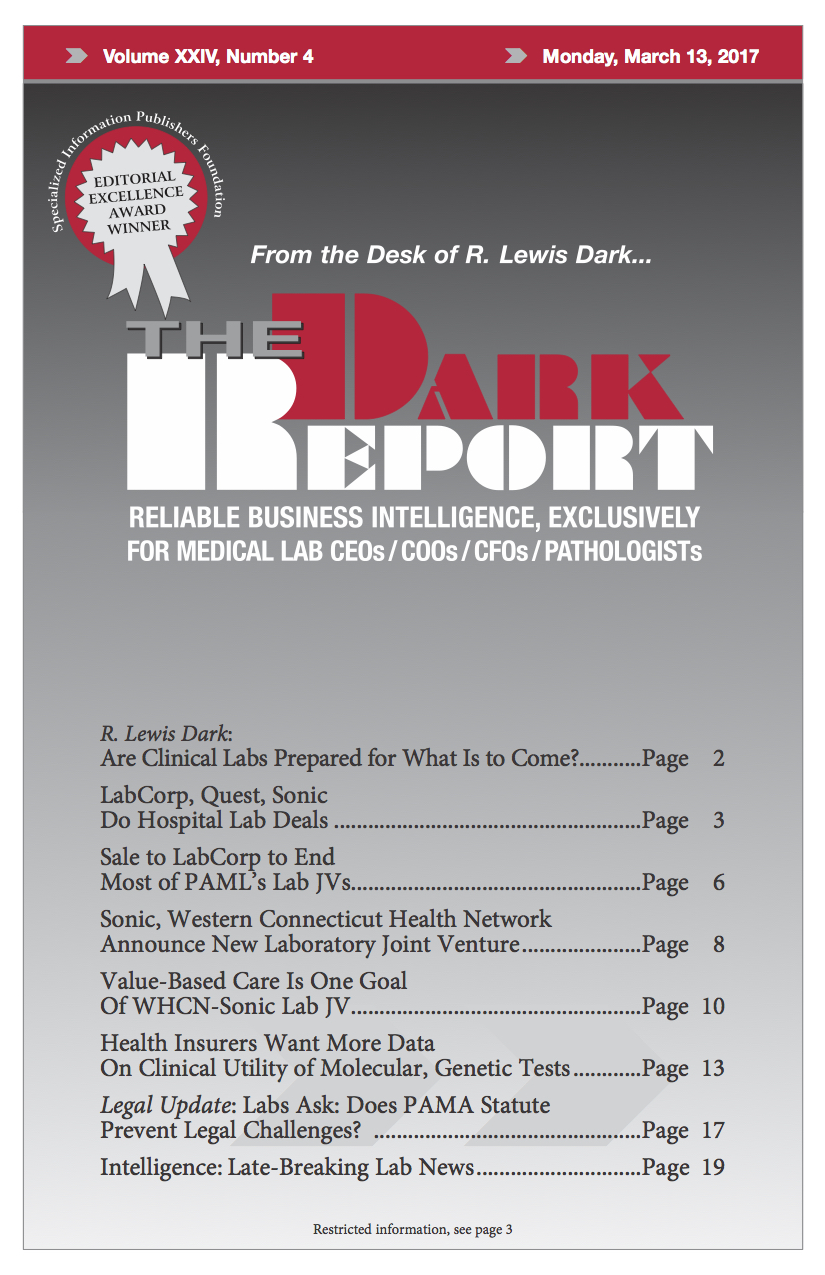This is an excerpt from a 1,021-word article in the March 13, 2017, issue of THE DARK REPORT. The complete article is available for a limited time to all readers, and available at all times to paid members of the Dark Intelligence Group. CEO SUMMARY: Is this year’s early spate of deals involving the sales of hospital lab […]
To access this post, you must purchase The Dark Report.


